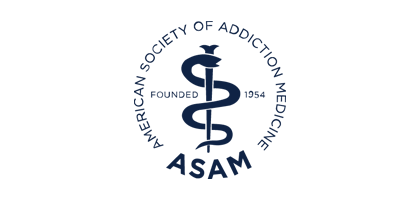Blog
President-Elect Credits Ruth Fox Scholarship, DFASAM Designation for Furthering Career
ASAM President-Elect Brian Hurley, MD, DFASAM, knew he wanted to become an ASAM member before he even enrolled in medical school.
At the age of 20, Dr. Hurley already had an interest in addiction medicine. Then during a visit to a potential medical school, he noticed a brochure in the school’s lobby that highlighted the benefits of ASAM membership.
After he started his first month of medical school in August 2002, making him eligible to become an ASAM member, he submitted his application to become a member. Since then, he’s grown in ways he never could have expected.
“Through ASAM, I learned an awful lot about this career and ways of practicing medicine that I was never exposed to as a medical student,” said Dr. Hurley, medical director of the division of substance abuse prevention and control of addiction medicine at the Los Angeles County Department of Public Health and volunteer assistant clinical professor of Addiction Medicine at UCLA.
Ruth Fox Scholarship
Soon after he became a member, Dr. Hurley received an email regarding the Ruth Fox Scholarship. He applied and the scholarship helped him attend his first ASAM Annual Meeting, which he said happened at a critical time in his career.
While in his third year at the medical school at the University of Southern California in Los Angeles, Dr. Hurley was trying to decide what kind of physician he wanted to become.
“I was really fortunate to get the scholarship at a time when I was really interested in addiction medicine and really interested in ASAM,” he said. “It exposed me to an entire career that I wouldn’t have otherwise been exposed to as a medical student. It really solidified the interest in addiction medicine that I already had. It gave it a tangibility.”
Dr. Hurley said he encourages other medical students to apply for the scholarship.
“It’s a great way to experience the annual meeting,” he said. “The Ruth Fox Scholarship gives you access to specialized sessions for physicians in training and direct access to ASAM leadership. It also connects you to the scholarship committee, which keeps an eye out for you and makes sure that you get what you need out of the meeting.”
Dr. Hurley added that more established ASAM members should support the Ruth Fox Scholarship, which he considers to be a pipeline of future leaders for the field of addiction medicine and ASAM.
“One of the concerns today for ASAM is we have a relatively aging membership,” he said. “Although there are a lot of junior physicians who are interested in the field of addiction medicine, without the Ruth Fox Scholarship, they wouldn't have the chance to learn about ASAM nearly as directly because it's an extraordinarily immersive opportunity.”
DFASAM Designation
A year after becoming board certified in 2014, Dr. Hurley pursued the DFASAM designation. He said the designation has led to many conversations about its work to advance the field of addiction medicine and the benefits of ASAM membership with other physicians.
Dr. Hurley said he would encourage ASAM members who are board certified in addiction medicine or addiction psychiatry to pursue the designation if they want to leave a lasting mark on their field.
“It’s really for people who make contributions to the field, who are really interested in making addiction medicine part of their professional identity,” he said.
As the president-elect looks back, he said his nearly 20 years of ASAM membership have been “absolutely rewarding” at each turn.
“For people who are interested in addiction medicine, ASAM is a robust professional home,” Dr. Hurley said. “The Ruth Fox Scholarship is one key way to get plugged into ASAM quickly. If you want to join a committee or get involved with any work, it's pretty easy to go from being a scholarship recipient into a committee spot.
“For those who are already serving ASAM, becoming a distinguished fellow is a great way of commemorating that work. It’s a great way of representing your contributions to the field but also helps bring visibility of ASAM to audiences that might not have otherwise been aware of it.”

